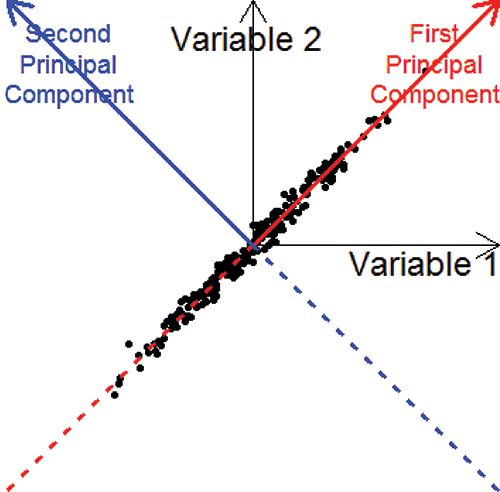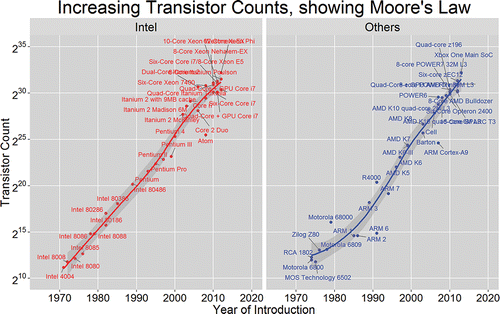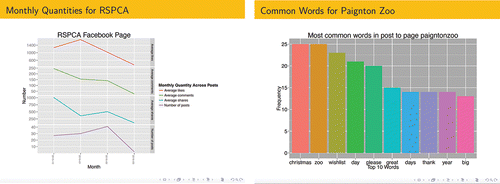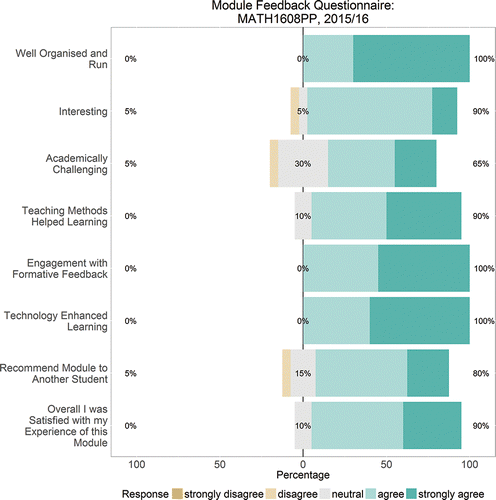Figures & data
Figure 2. Our second motivational example based on the child eye data. A sequential color palette represents child age. Positive/negative values of visual acuity correspond to long/short sight.
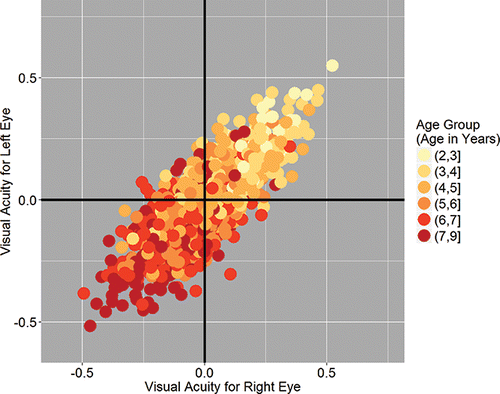
Figure 3. Our second motivational example based on child eye data. The use of faceting shows in detail how children become more short sighted as they grow.

Figure 4. A simple plot, produced using base R functions, with a legend. This can be used to explain the meaning of simple summary statistics.
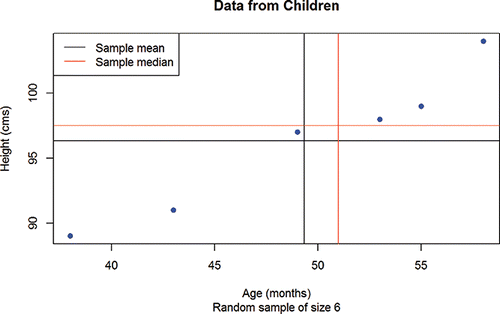
Figure 5. A wordcloud for the plymouthargylefc Facebook page. Plymouth Argyle is a local football club, known as the Pilgrims. The size and prominence of a word depends on the number of times that it appears.
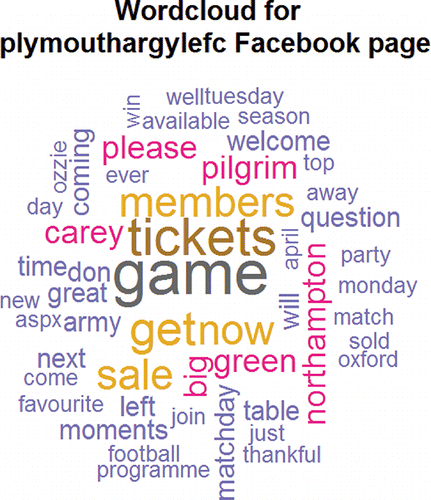
Figure 6. A sentiment analysis for the plymouthargylefc Facebook page. Each post was assigned a sentiment score calculated as the number of positive minus the number of negative words that it contained.
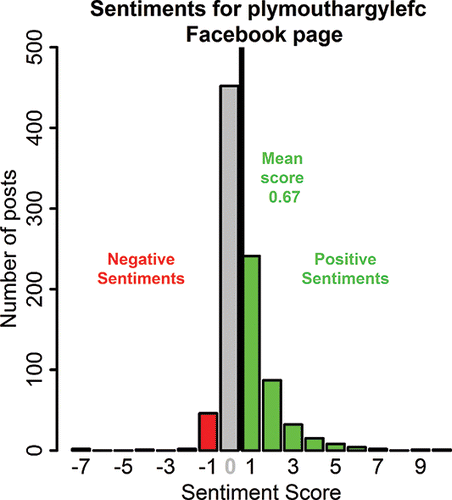
Figure 7. An illustration of principal component analysis. Retaining only the values along the first principal component preserved 99% of the information in the data points.
